Lori Ballen, the owner of this website, benefits from purchases made through her affiliate links.
As an Amazon Associate, I earn from qualifying purchases. Some links on this site are affiliate links. Portions of this content are generated by AI.
There are a variety of birds in Las Vegas. Part of the city’s growth is due to its proximity to a number of migratory bird flyways. There are large expanses of desert that provide a stopover habitat for birds traveling along these routes.
Research has shown that there are more than 300 species of birds residing in southern Nevada or passing through during their migration periods. The area was once home to a much larger population of birds but this was diminished greatly when the Colorado River flooded in 1905; many small islands were formed in the river allowing predators such as snakes and coyotes access to nesting sites.
In Las Vegas, you might see the following Birds:
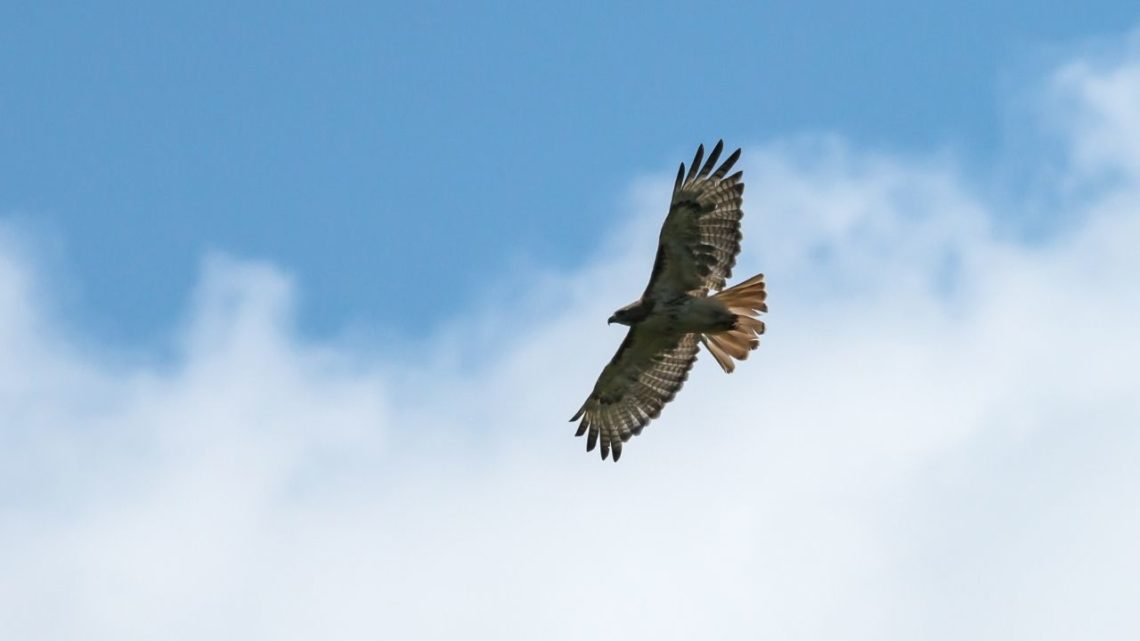
Red-tail hawks usually eat small mammals such as mice or rabbits but have been known to eat migratory waterfowl and songbirds. They can be identified by their long tails and red tail with white bands. Their nests are large in size, constructed by the adult birds out of branches located on tall trees or cliffs, generally above other bird species for protection purposes.

The American Kestrel is one of the most common birds to see in Las Vegas. They are known as Falconry birds because they are used by falconers who train them to hunt prey such as songbirds, rabbits, grasshoppers, and lizards.
If you see a small falcon or kite flying low over your head then there is a good chance it’s an American Kestrel bird hunting insects like flies or dragonflies that can be found on the ground during this time of year.
It has been estimated that the species is responsible for nearly 40 percent of all bird prey in North America. This bird’s diet consists primarily of insects, lizards, and small mammals like mice but will also eat other birds like starlings if they are available.
The American Crow is often seen in Las Vegas. The bird is most commonly identified by its jet-black body and white throat. Crows are omnivores and will eat anything from beetles, grasshoppers, lizards, snakes to turtles.
They form large flocks of more than 100 birds in the winter. The species has become very popular as a pet due to its intelligence but they can also be found around artificial water sources like lakes or rivers if food or nesting materials are available in the area.
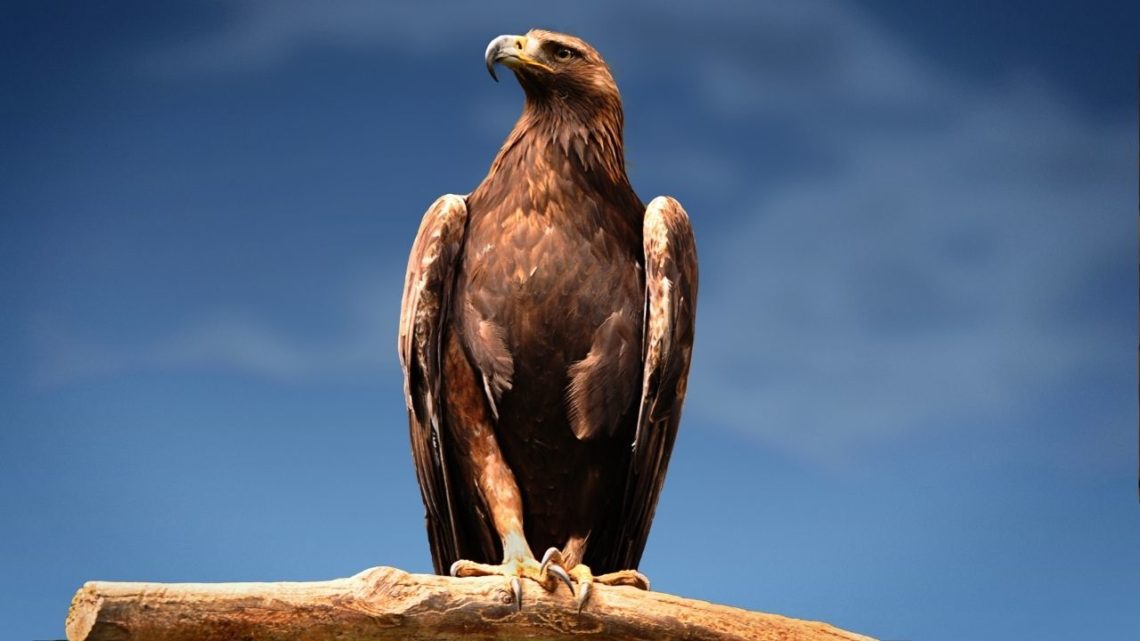
The Golden Eagle can be seen in Las Vegas around cliffs that face east and west where there are rocky shelves below them to provide a nest for eagles. These birds usually build their nests on inaccessible ledges or crags.
They often soar high above treetops scouting for prey such as prairie dogs, coyotes, rabbits, and other small mammals. They are opportunistic hunters known to eat some insects and carrion when there is not enough food available closer to the ground.
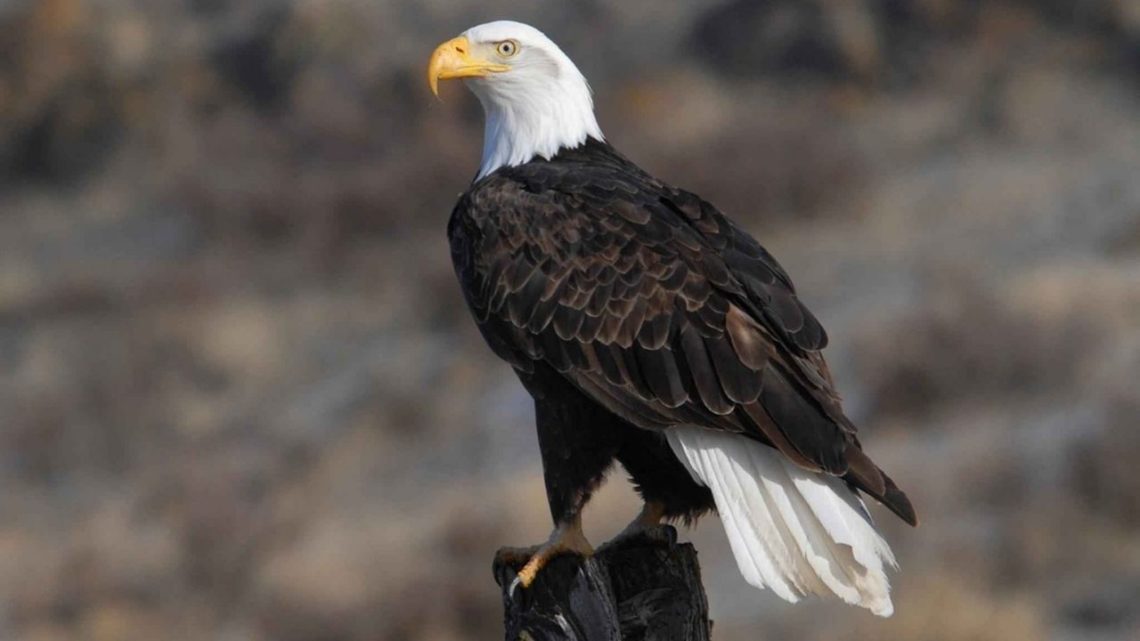
The Bald Eagle can be seen on Lake Mead or Boulder Basin Reservoir during the winter months. They feed mainly on fishes but will also hunt deer, rabbits, squirrels, and large birds such as swans if they are able to catch them before they take flight.
Bald Eagles usually have a wingspan of 72 inches but weigh less than 10 pounds which allow them to dive at speeds greater than 200 miles per hour in pursuit of their prey. The species has become more popular due to its use by Americans as a national symbol.
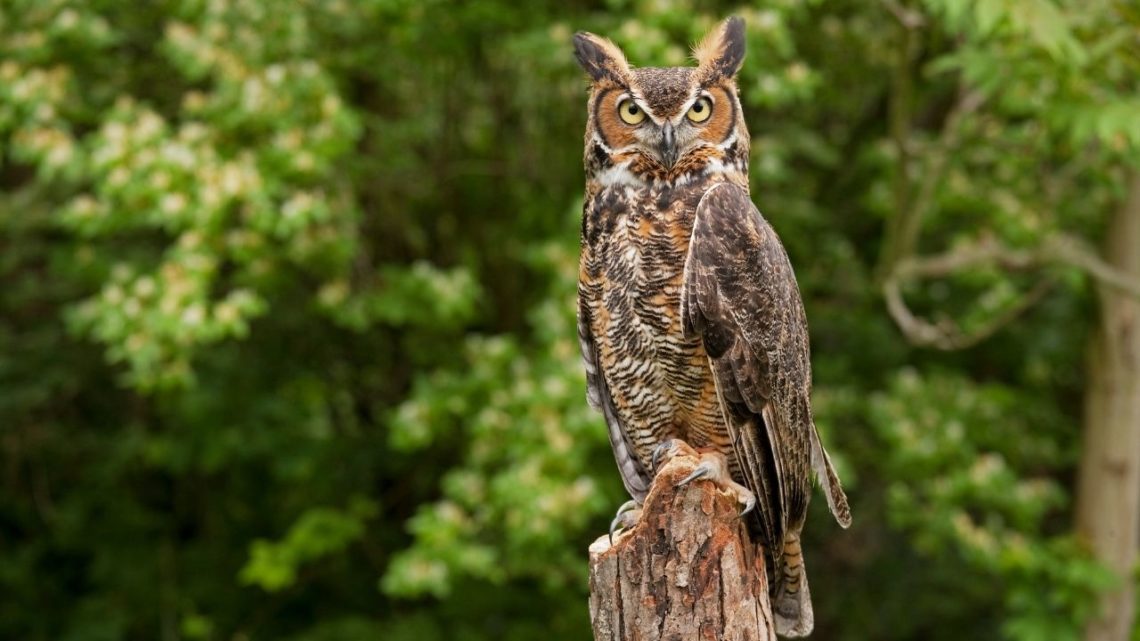
Great Horned Owls can be found in Vegas year-round depending on the weather. They are usually the first to hunt near dusk and dawn looking for rodents or large insects such as grasshoppers, beetles, and katydids that live in fields or forests during the summer months.
The species can be identified by its chocolate brown body with white head markings which resemble facial masks worn by ancient Greeks during theater performances. Owls have excellent hearing and vision but also possess a sensitive sense of touch around their facial disk that helps them locate prey in low light conditions.
If you find an owl feather then it may not be from this bird species because many different types of birds lose their feathers occasionally when hunting above water sources like lakes or rivers where they dive after fish. A reliable method to identify this bird would be finding the nest during nesting season.
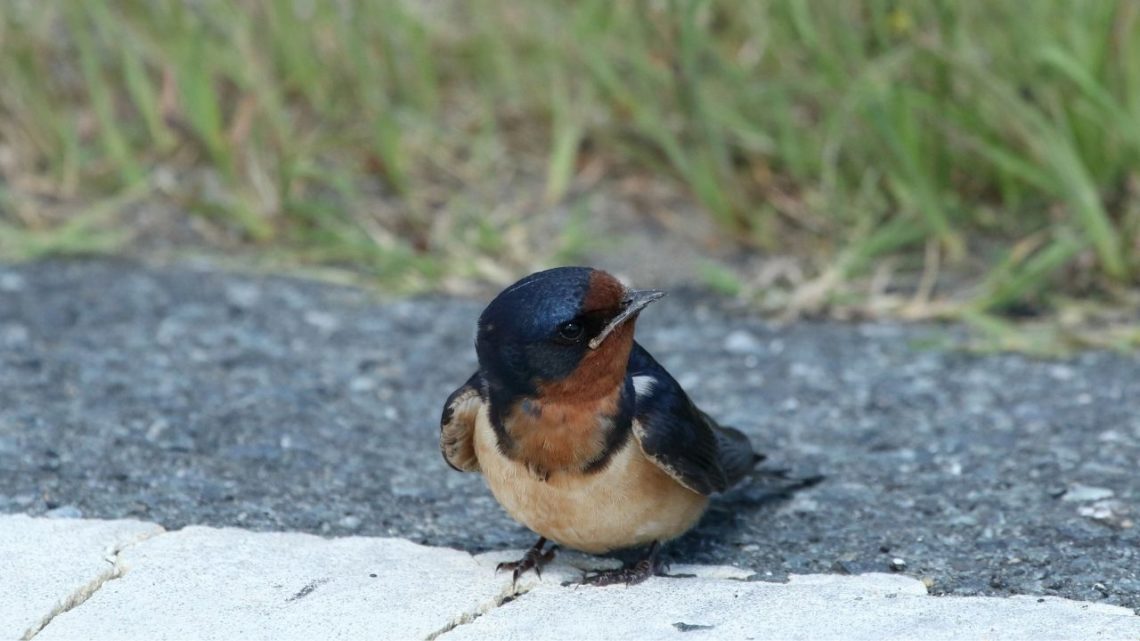
The Barn Swallow is a great bird to see in Las Vegas year-round especially around barns where farms are located nearby. They feed on insects like mosquitoes, grasshoppers, fruit flies, and beetles that live near tall trees or large buildings such as barns or factories.
Barn Swallows can be identified by their short triangular wings, long forked tail feathers, and a dark bluish-black body that resembles the color of worn asphalt. The birds are also known for their tail-wagging behavior before the flight in the presence of threats from predators looking to catch the species on the ground or steal eggs from nests built high off the ground.
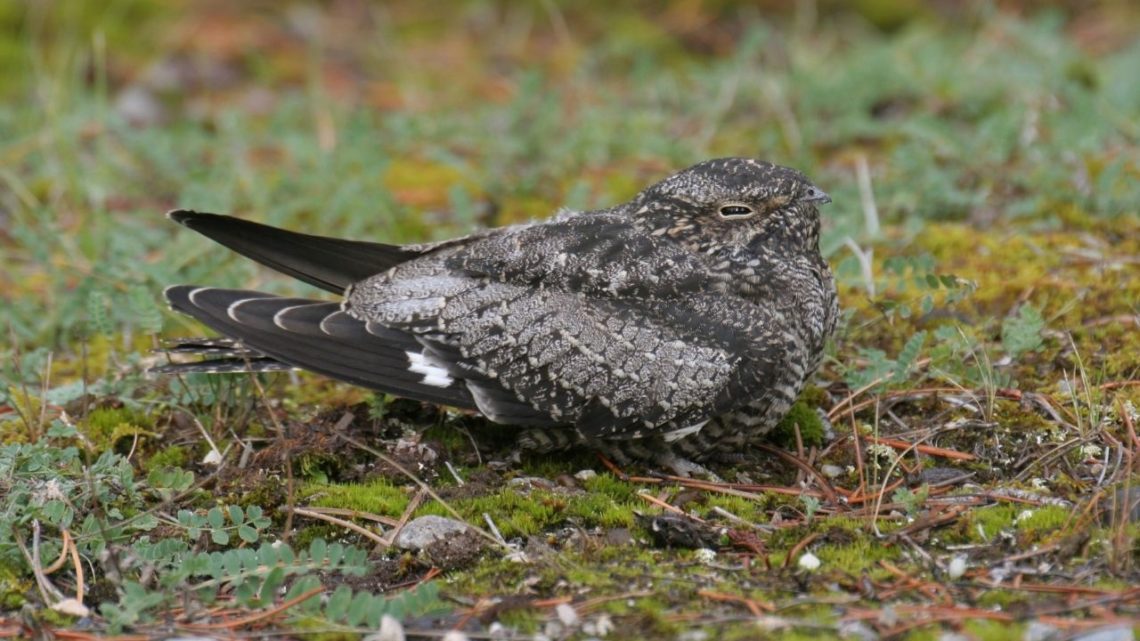
Common Nighthawks are seen in Las Vegas during the summer months perched on telephone poles looking for large insects like beetles and moths to eat from above. They rarely eat spiders but have sharp claws which they use to catch prey in mid-air or snag them off the ground if they drop low enough.
The bird is most easily identified by its dark brown body with white vertical stripes across its chest. The species has become very popular as a pet due to its ability to mimic noises made by other birds, dogs, cats, and even human speech if trained early enough before fully developing more advanced adult vocalizations.
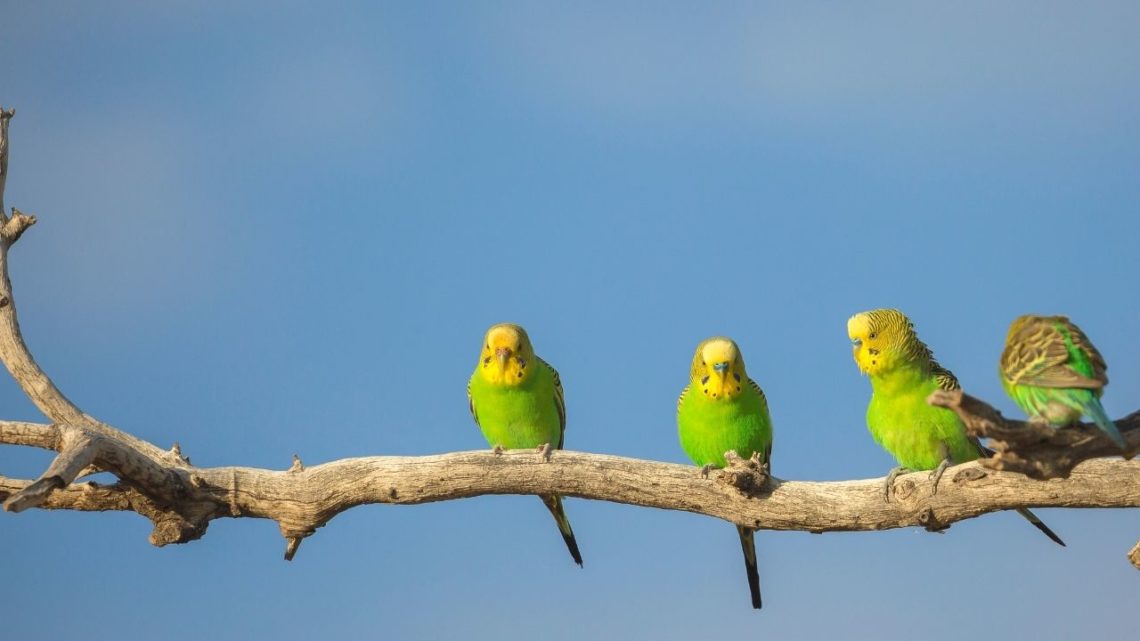
The Budgerigar or Parakeet is a small, very colorful parrot that originates from Australia. It has been introduced and naturalized in many places around the world including North America, Great Britain, and Ireland. In Las Vegas, you might see this species moving into residential neighborhoods due to their lack of predators there. It’s easy to identify by its blue body with yellow head and red tail feathers.
The males are usually more brightly colored than females who can be found in three different color morphs: orange-yellow, white, and gray (most common). Both sexes possess a short crest on their heads which when extended make them appear larger. In the wild, they forage for seeds but will also eat insects if available.
They are usually seen foraging on the ground looking for food like insects, small mammals, and seeds. The species is known for its ability to lighten their feathers or other parts of their body when they are near a reflective surface like water in order to attract the gaze of predators allowing them to hide better from danger!
They also have an amazing sense of direction that allows them to return home if displaced up to 2 miles away even after traveling across vast landscapes as found by experiments carried out in England.
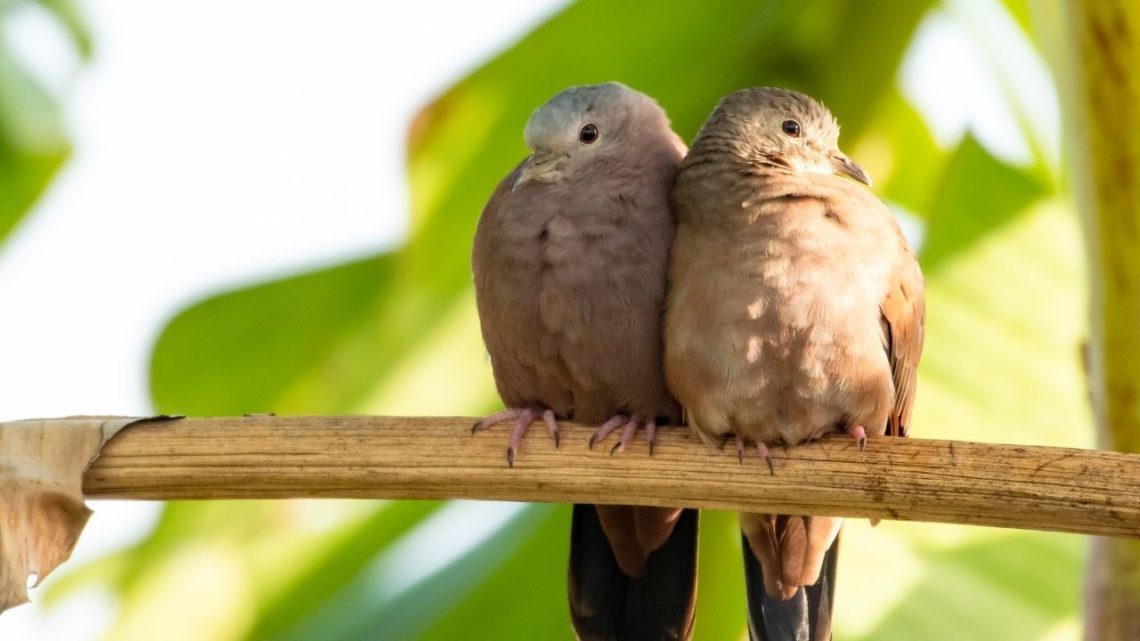
The Ground Dove can be identified by its grayish-brown upper parts with black streaks and white belly and throat. It has dirty red patches on the wings and tail feathers which fade into yellowish color during summertime making it hard to tell apart from the Mourning Dove.
In Vegas, you’ll find the Ground Dove foraging on the ground for seeds and other small invertebrates like snails, spiders, worms, and insects. The species is known to live in close proximity with humans including farmers to eat grain pests that can harm crops.
They are gregarious birds which means they will flock together during feeding time in groups of up to 30 individuals while also relying on larger flocks of 100 birds or more during the breeding season.
This behavior allows them to easily locate food by following visual cues provided by their flock members. The Ground Doves feed on seeds, flies, and insects during the warmer months but will switch to small amounts of plant matter (e.g. leaves, shoots) when food is scarce in the wintertime.
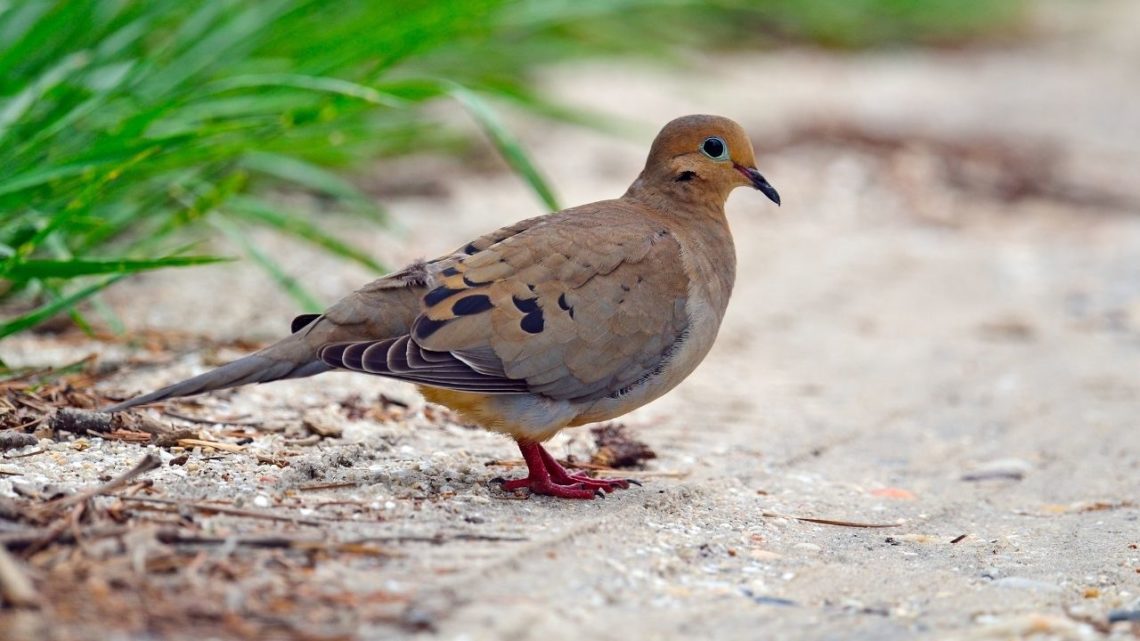
The Mourning Dove is a very common bird in Las Vegas year-round due to its adaptation toward living near humans even in large cities. It’s easy to identify by its gray head with black streaks and darker wings with white tips forming bars across them.
The tail feathers are also covered in white color along with a blotched pattern on the chest from dark brown coloring similar to that of the Ground Dove which makes it harder to tell apart from this species during springtime especially after molting where their new feathers appear dull
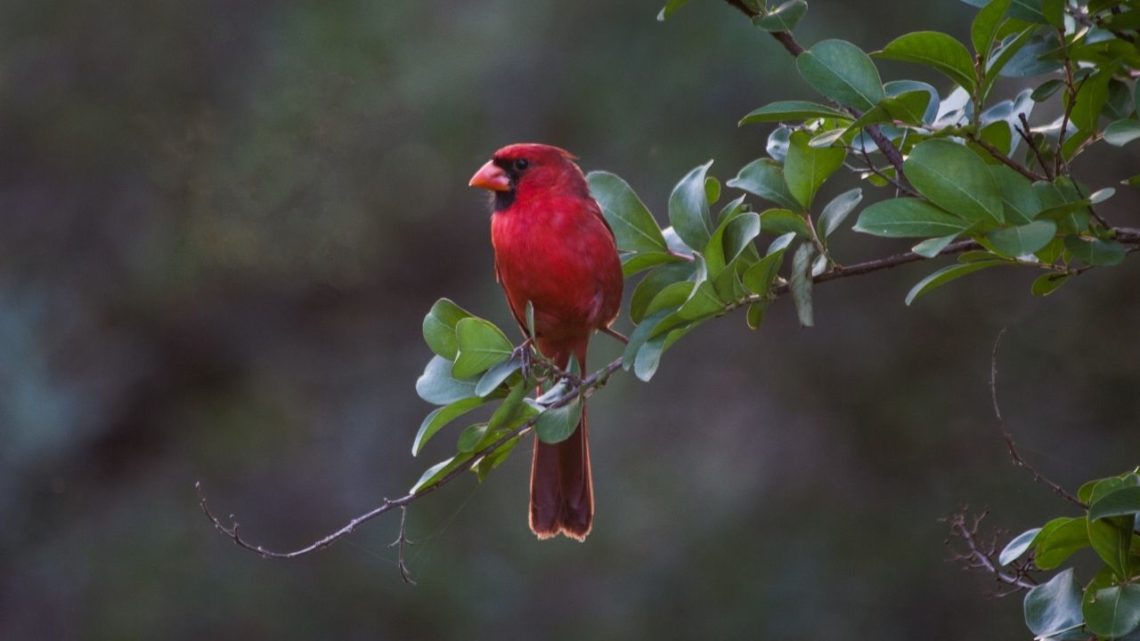
The Northern Cardinal (Cardinalis cardinalis) is a North American bird species that has an amazingly bright red body with black beady eyes! Males and females can both be identified by their large crest, stout shape, and slightly different feather colors.
They have shiny feathers with many different patterns but the males tend to stand out from the crowd because they have thick breast feathers that make them appear bigger than they really are!
They also have specialized receptors in their nostrils like the Ground Dove that help them detect odors in order to recognize each other during courtship as well as food while on the hunt.
Their diet consists of seeds and other plant material but they will also eat small insects like beetles, crickets, or grasshoppers if they are in season! The Northern Cardinal is a songbird so it will use its voice to communicate with others for mating purposes as well as warn individuals about danger using a loud screech call. They make their nest in dense shrubs and bushes near water sources which makes them vulnerable to predators like snakes, owls, and other large predators.
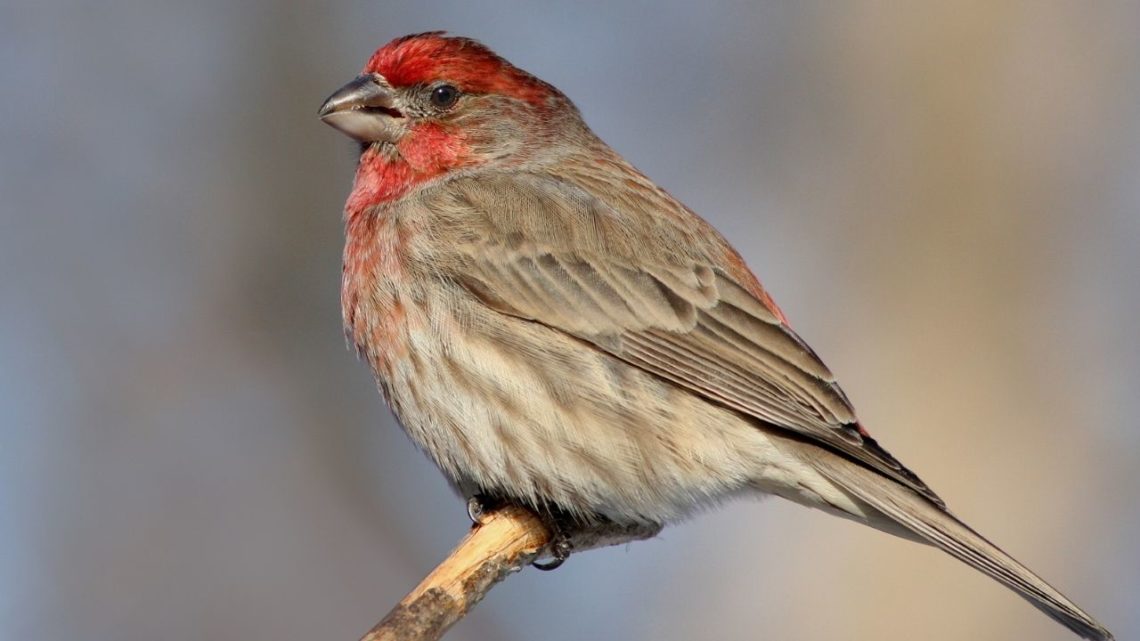
The House Finch is a bird in Vegas that you’ll find in almost every neighborhood especially in cities and suburbs. They are small size birds with bright yellow bellies, breasts, and rumps!
The males have a black face with a red crown that makes them look similar to the Northern Cardinal sometimes although the crest on their head is smaller compared to its appearance. The female House Finch is also easier to identify by her brown coloring paired with streaked markings on the back of her body whereas the male has more gray coloring.
They’re not picky eaters so they will consume seeds from grasses or weeds but they prefer worms, snails, spiders, beetles, caterpillars, and fruits like berries which can be found growing wild in Las Vegas during late spring through fall when it’s time to breed.
The House Finch also has a very unique call that is different from the other birds in Las Vegas. It’s high-pitched and sounds like they are clearing their throat which makes them easier to locate by its sound during the mating time!
You can find this species as far as Southern Canada all the way down to Northern Mexico across different types of forests, shrublands, and habitats.
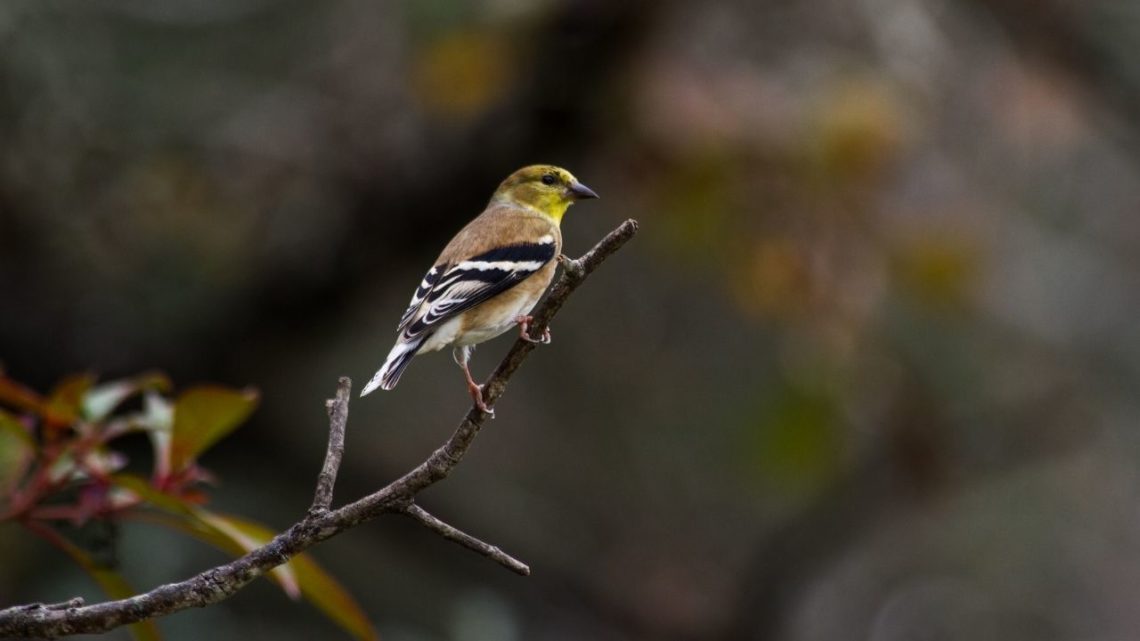
American Goldfinch (Carduelis tristis) only breeds within Nevada for part of the year but you’ll see it throughout our state just before fall when it migrates Southward. They have long tails with white highlighting across their chest and black beady eyes while males stand out by having a bright yellowback.
They have many different songs and calls that can be heard during the day or night including alarm chirps, soft whistles, and even mimicking other bird species! The male will use its voice to attract females who also sing with their wings spread out calling for mates.
Its diet consists of seeds from weeds such as dandelion, chickpea, mustard plants but it prefers buckwheat because it has more nutrients which is beneficial toward the growth of eggs in order to mate which makes them vulnerable to predators such as owls when nesting especially in urban areas where there are fewer trees!
You’ll commonly find an American Goldfinch in yards eating grains on the ground along with the House Finches or fluttering around the trees and shrubs during winter.
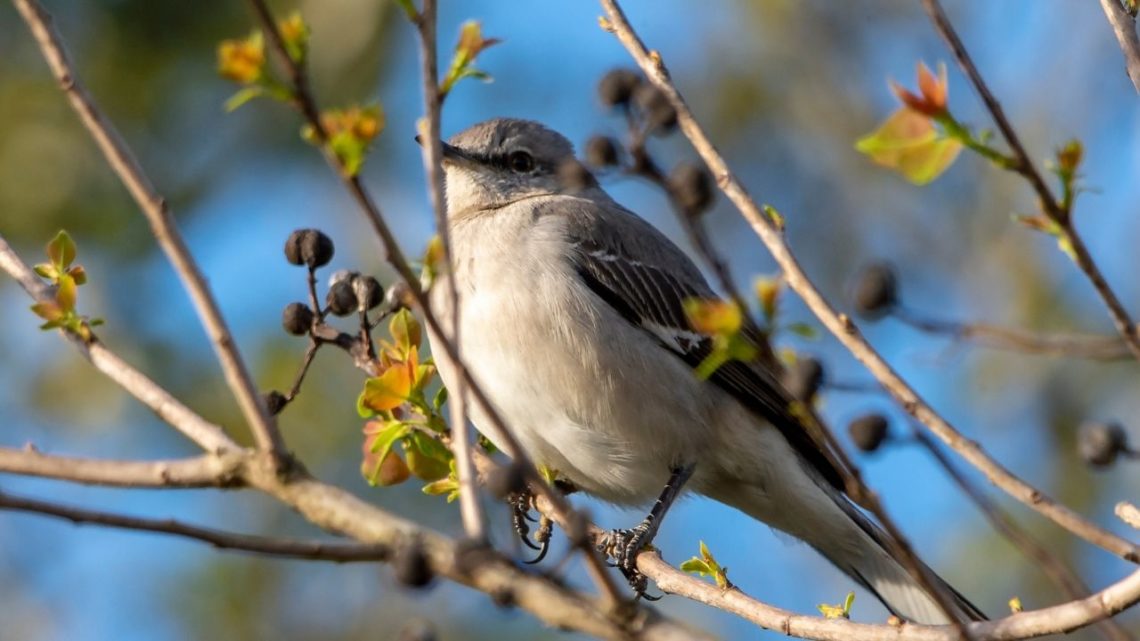
The Northern Mockingbird (Mimus polyglottos) is one of the more common birds in Vegas that you can find perched on a branch of a tree with its beady eyes and black feathers across the back of its head, eye area, and tail! Their wings are also brownish-black but they have white underneath which has striking colors making them easy to observe from a distance.
You’ll commonly see this species swooping down for insects like grasshoppers, crickets, or beetles! If you get closer to it you’ll notice that males have a shiny purplish-blue crown while females are duller in color with drab gray coloring. They have a different song and call that is unique to this species from other birds such as the Mockingbird which makes it easy to tell them apart!
The Northern Mockingbird also likes to frequent yards or gardens where they will catch insects or eat food scraps people leave behind, especially in suburban areas.
For predators, these birds are prey for owls and hawks so whenever you spot one near your home be sure to keep an eye out for nearby predators like snakes, foxes, and coyotes!
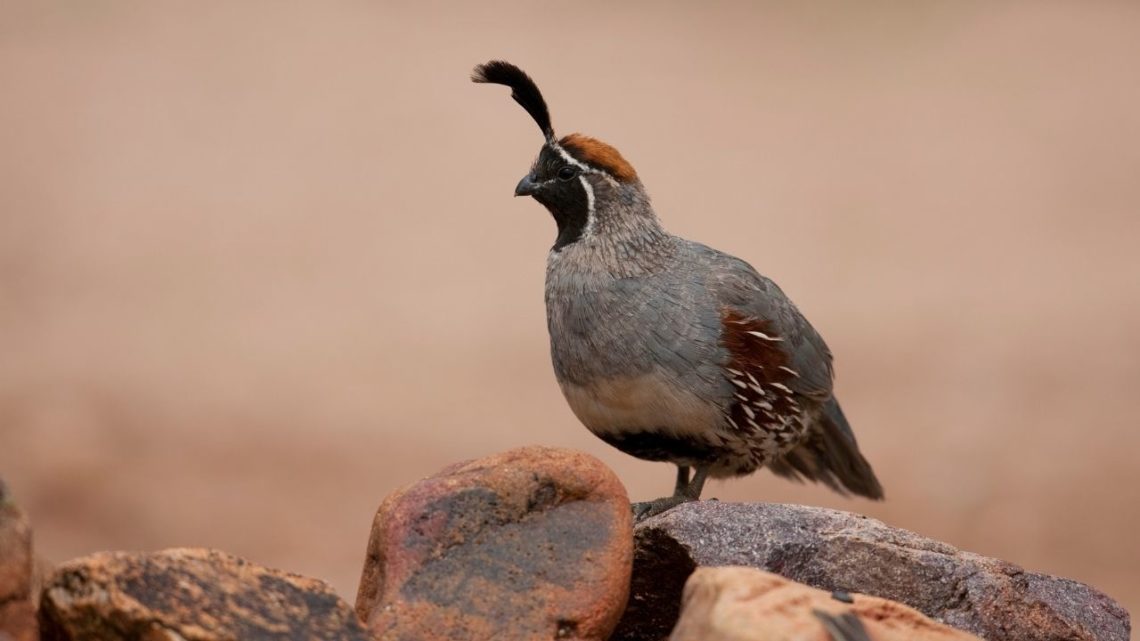
Gambels Quail: Often mistaken for a chicken, the Gambel’s Quail (Callipepla gambelii) is one of the largest birds in Las Vegas and you can easily spot them on top of bushes with their brown, black, white coloring that keeps them camouflaged well when they are resting.
The male has a rufous colored crown while females have longer plumes than its counterpart making it different to tell between males and females at first glance!
They breed from April until July where you’ll hear their calls sounding like “bob-white” which are used by males during mating rituals to woo over females into nesting. They also make other sounds such as clucks or chirps to communicate.
Their diet consists of insects, plants, and seeds making them omnivores which are easy to find in the scrub areas throughout our state.
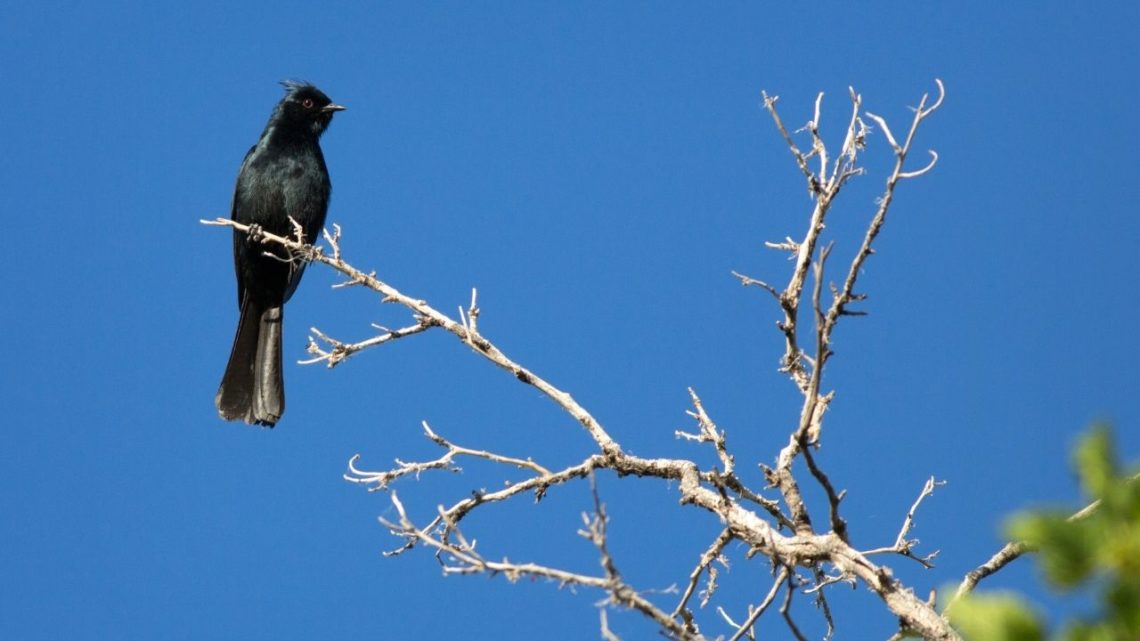
Phainopepla (Phainopepla nitens) is a small bird that takes on the colors of its surroundings for camouflage and it looks like a sparrow! They often hop around along tree branches looking for insects to eat or seeds from plants.
You’ll see males during spring nesting time with shiny green feathers on their back and their beak while females are drab-looking meaning they don’t have bright colors making them easy to distinguish. These birds have long wings so they can fly in all types of weather including snowy conditions which are helpful when finding food sources.
The males make calls such as chirps or rattles whenever they discover food sources that will call over other females for mating! During winter, you can spot these birds hopping around

Great-Tailed Grackle: Huge and noisy, the Great-tailed Grackle (Quiscalus mexicanus) is a very noticeable bird in Las Vegas that you can spot with its large body, black neck, wings, head with a white face making it easy to identify. They are everywhere from fields to suburbs where they will eat insects and seeds available on the ground!
They often make loud calls sounding like “gadaw” or “grack, grack” which wakes up other birds in the area so they may join in for group events such as breeding.
Because of their gentle nature and lack of predators in urban areas, these birds have no fear of humans so if you see one be sure to scare it away by making loud noises to keep them away from your property.

Kelp Gull: For a bird that looks like a seagull you can spot the Kelp Gull (Larus dominicanus) in Las Vegas especially near bodies of water such as ponds, lakes, or rivers where they will dive into the water looking for fish or aquatic insects like crickets!
Their long beaks make it easy for them to grab their prey and take it back up out of the water. You’ll see them resting on nearby rocks after catching food to dry off until their next meal comes along! These birds are also known as Sea Swallows because of how light they are due to hollow bones in both sexes!
You’ll hear them make intimidating calls to each other whenever they are scared or angry. This bird may be found in urban areas due to its lack of predators so if you see one let it sit where it is without making loud noises because it will only fly away when they are ready!

Rock Wren: The Rock Wren (Salpinctes obsoletus) resembles a sparrow since it has small wings and a very long beak that helps pluck up insects on the ground like ants. You’ll find them living in rocky areas such as steep cliffs, boulders, and canyons for nesting purposes which make their homes next to crevices that provide shelter from winds, rainfall, or other predators. You can spot their black, white, and gray feathers that help to conceal them from predators although there are snakes or lizards in the area so they will swoop down on prey very quickly.
The Rock Wren is a direct descendant of its ancestor, wrens which are small and have long tails. Their nests can be found close to water sources or streams which makes it easy for drinking and bathing needs! You’ll often hear their cries when they are excited such as “pree-pee” sound used during mating rituals! This bird is less likely to be scared away by human activity because it has few threats naturally in this region making it comfortable living in urban areas.
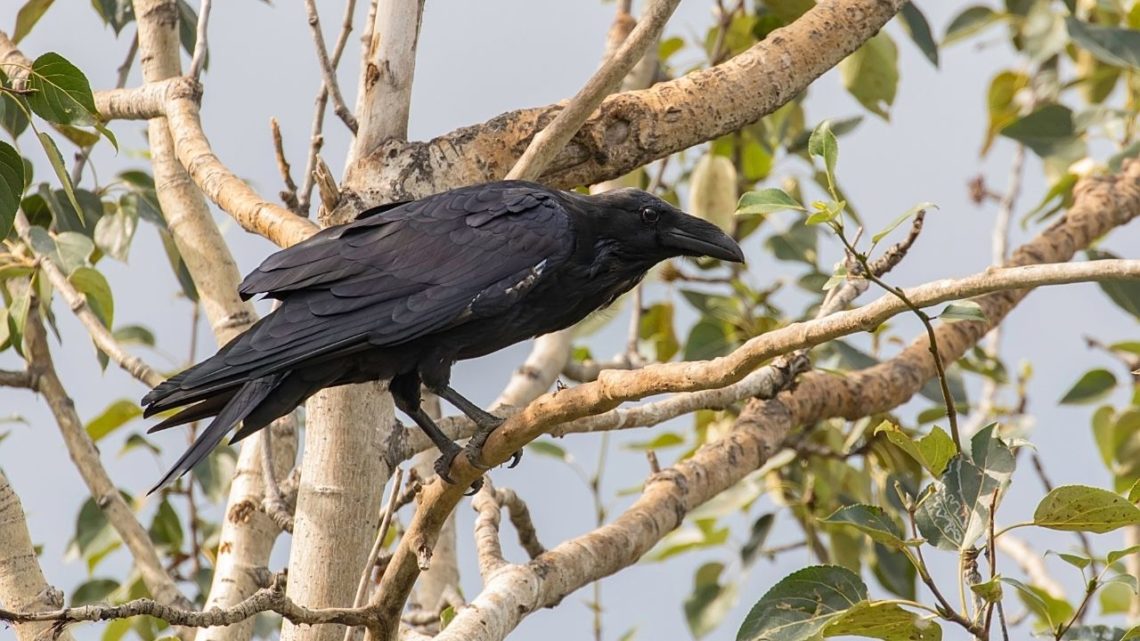
Common Raven: The Common Raven (Corvus corax) may be found in areas such as hillsides, canyons, and cliffs which are excellent places to find insects or small animals like lizards. They have large bills that are used to catch their prey so if you hear a chewing noise this may be the Common Raven searching for food sources!
You will see them flying around with dark-colored plumage while their feathers help protect against sunburns and water damage from rainstorms. Their huge size is also helpful when it comes to protecting food sources from other birds trying to steal away their next meal! These birds do not hesitate to eat carrion from dead animals making them less picky as long as they can get enough nutrition from what’s available nearby. They often fly in groups of four to five for protection purposes making it harder for other birds and animals such as cats to attack!
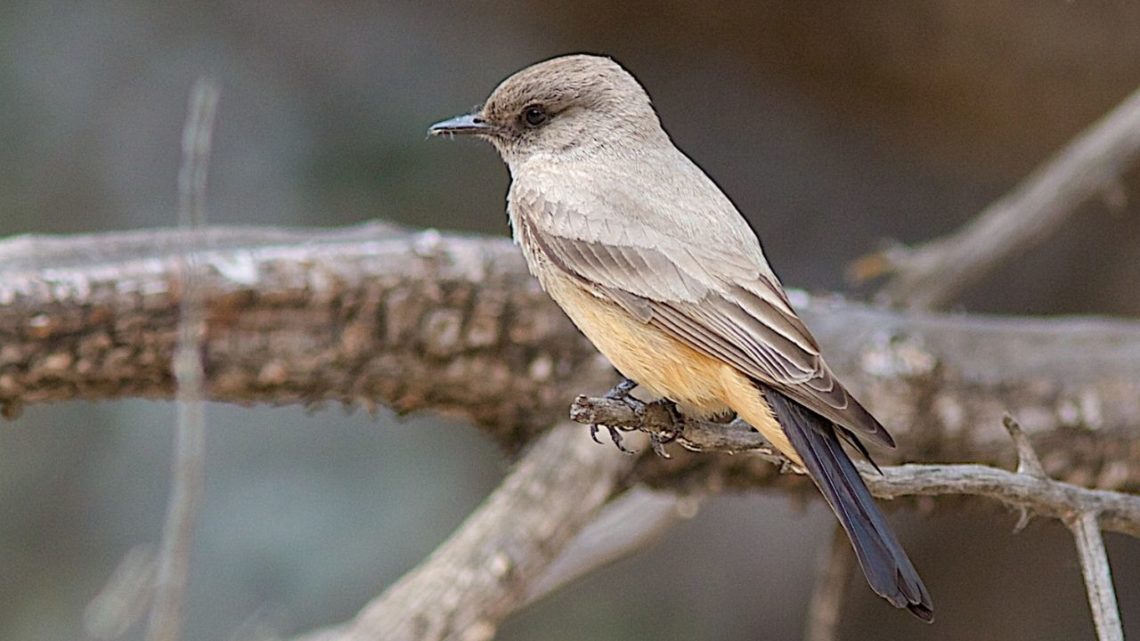
Say’s Phoebe: The Say’s Phoebe (Sayornis saya) is a type of bird that may resemble a wren but is actually its own type. You can spot them in urban areas or near bodies of water such as lakes, rivers, or ponds where their main diet consists of insects!
This active bird will often be seen hopping quickly from one branch to another looking for food on the ground between rocks and other vegetation. They are usually gray-brown in color with white patches underneath their tail feathers which helps make it more visible during mating! You’ll hear them make sounds similar to “pee-ah” when they are vocalizing since they have a sharp call that may sound like squeaky wheels rolling across the floor.
You may spot this bird flying from one nest to another while its white underside stands out in contrast to the green leaves for camouflage purposes. The Say’s Phoebe is a strong flyer that may be seen coming back to the same nesting area each year as long as the habitat remains safe and secure throughout the years!
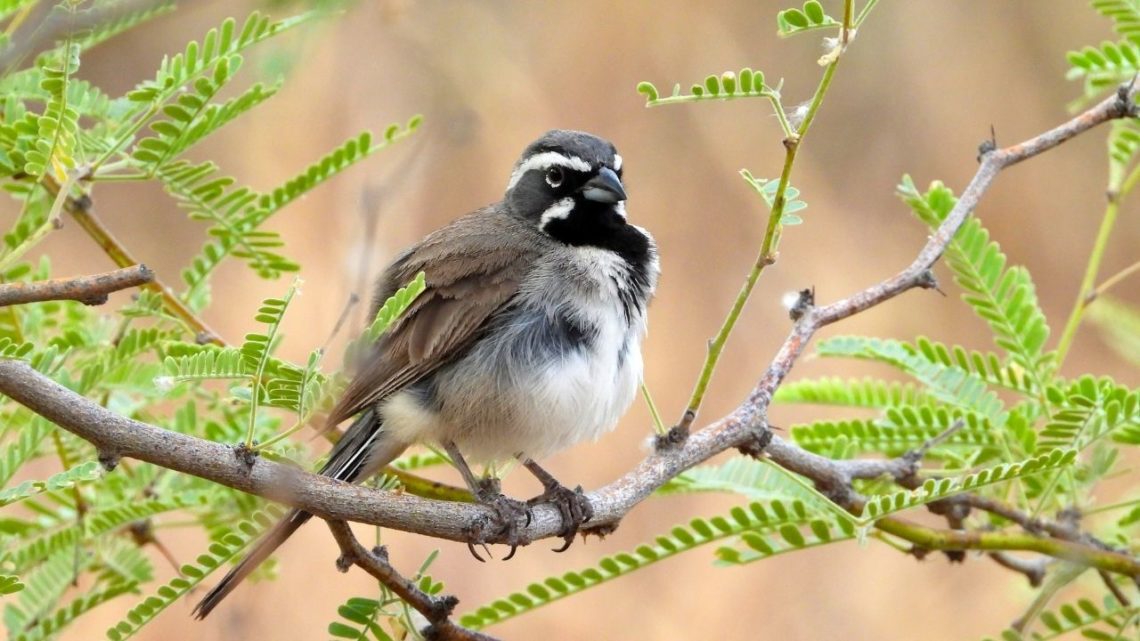
Black-Throated Sparrow: The Black-throated Sparrow (Ammospiza nigrescens) can be found in the desert where they live near water sources with a small bush or two nearby for shelter. You’ll spot them hopping around in groups of four to five on the ground looking for insects or seeds to eat while their chirping sound can be heard all day long!
If you see one standing still with its tail raised up above their heads it means that they are alert and protecting its territory from other birds that may want to move into this area. This behavior is also helpful when it comes to mating rituals because females will pick males that stick out from the group since these males have healthier traits included in their DNA structure compared to other birds that aren’t as social or larger in size.
The Black-throated Sparrow may be spotted with a belly that is dark gray while their back feathers are black along with white spots making it easier to hide from predators. They may also make sounds such as “tsuck” when they feel threatened or during mating rituals which help attract the opposite sex quickly!

Mountain Chickadee: You may spot the Mountain Chickadee (Parus gambeli) in areas with plenty of bushy trees to protect themselves from predators. This bird has a gray back and chest along with white cheeks that make them look more plump compared to other birds which are helpful during mating.
The reason for this is because larger individuals are favored by females since they know that these males have good amounts of energy stored in their bodies that will help their babies grow stronger! They also produce pheromones by rubbing their belly feathers on tree trunks which helps attract females looking for a mate!
Their beaks have an orange tip coming to a tapered point that helps them find insects hiding inside tree or bush cracks for their main source of food. It’s often heard imitating human-made sounds such as doorbells or children playing outside!
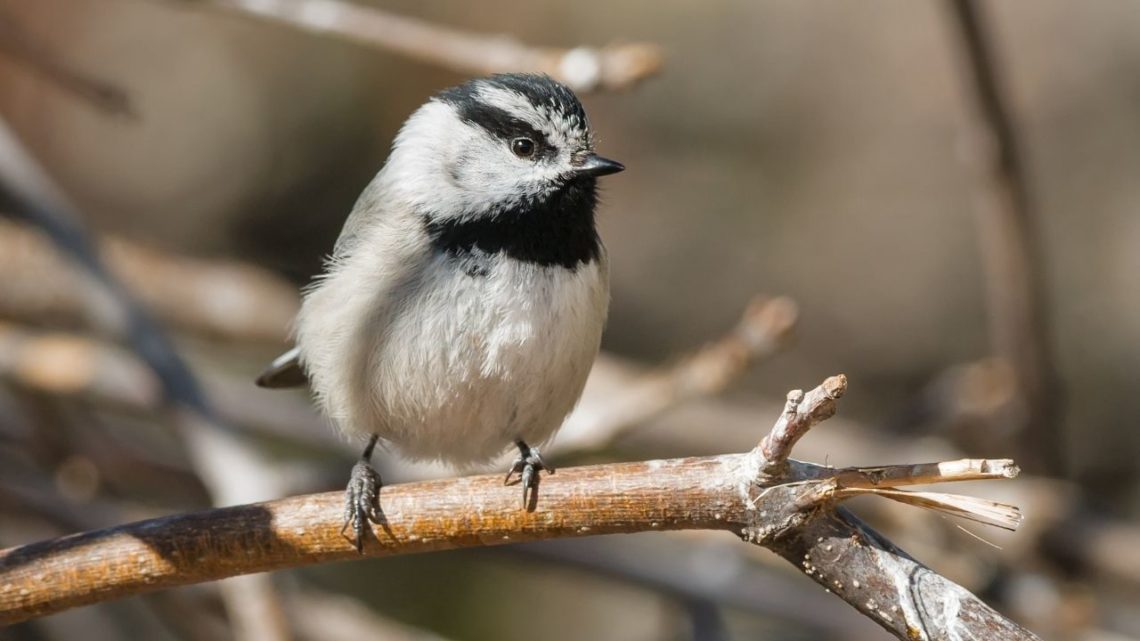
Bewick’s Wren: The Bewick’s wren (Thryomanes bewickii) is one type of bird found in Las Vegas, Nevada that lives among the trees and shrubs. One way you can spot them during mating season is by watching for males who have white coronas on their heads with a black stripe down the center of their back. They may make a chirping sound consisting of “pee-churr” which alerts others to their presence while they are trying to find a mate!
The Bewick’s wren is smaller in size compared to other birds and can be seen hopping from branch to branch looking for insects or spiders crawling along the ground between rocks or plants. Their sharp black eyes help them spot food sources quickly even if it means flying up into trees as high as twenty feet above the ground just to catch sight of something that could provide energy for its tiny body structure! This bird makes a variety of sounds similar to squeaky wheels rolling across wood floors giving it a reputation for sounding like crazy birds!
If you see one sitting calmly on a branch it may be watching for predators such as cats or other birds that are known to eat Bewick’s wrens. They have strong legs that can help them swim in water that is deep enough which helps keep their body structure warm during cold weather spells! Be aware of what kinds of birds you spot in Las Vegas if you plan on entering the city limits since this information could save your life during an encounter with a cat, an unfamiliar dog, or the dangerous desert creatures lurking nearby looking for dinner!
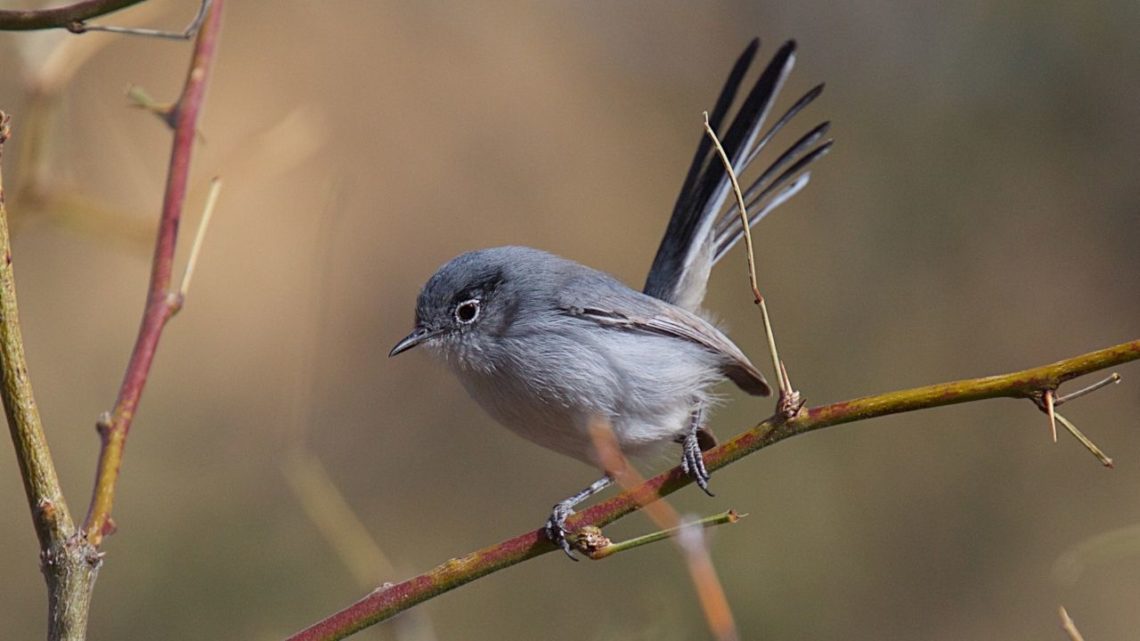
Black-tailed Gnatcatcher: Black-tailed Gnatcatcher (Polioptila melanura) can be found in the desert where they make their homes within small trees or bushes because it helps them camouflage with the surrounding foliage. This bird has a long tail that is black on the end and brown along with white feathers making it stand out from other birds while its gray belly feathers make it easier to blend in when perched on a branch for protection from predators. You’ll hear this bird chirping sounds similar to “churr” while they are waiting to mate.
If you see one sitting still with its tail up and spread outward, then you know that it may be trying to fend off other intruders who might enter this territory searching for food! The Black-tailed Gnatcatcher may be small in size, but their black eyes along with the ability to make sounds such as “churr” which can attract a mate quickly is an advantage when it comes time for the mating season!
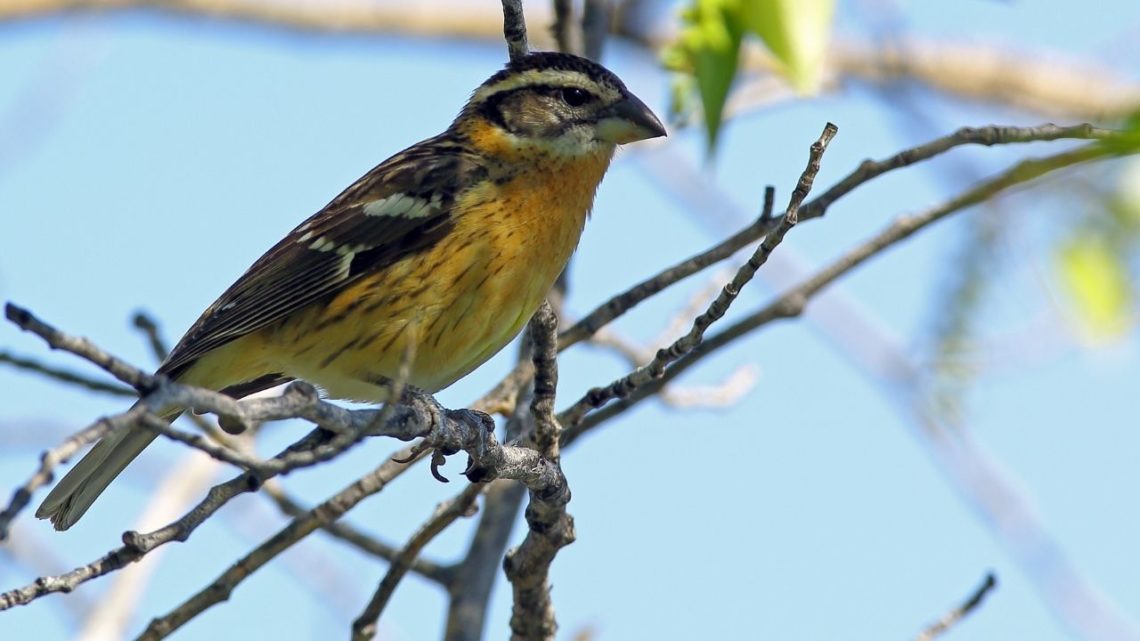
The Black-headed Grosbeak: One type of bird found in Las Vegas that is fun to watch while sitting outdoors during breakfast or dinner is the Black-headed Grosbeak (Pheucticus melanocephalus). These birds have a thick body structure compared to other birds making it easier for them to survive the heat within the desert. Their dark brown head makes it easier for them to blend in while perched on branches among leaves or berries located high above the ground. They have a lighter-colored chest area along with a long pointed beak similar to other birds that can help them make sounds such as “tik” while they are searching for food.
You may hear their distinctive throaty chirping sound near treetops since they prefer the branches located high above bushes or even the ground where insects are known to hide during hot summer days! The Black-headed Grosbeak is one of many types of birds found in Las Vegas that you want to watch out for when sitting outside during meal times or when playing in the backyard since it may try and take away your food while you’re having a picnic or watching your children play without your knowledge.

Blue Grosbeak: The Blue Grosbeak (Guiraca caerulea) is one type of bird found in Las Vegas which feeds on seeds and insects depending on their locations around the city limits. This bird has a thick body structure making it easier for them to blend in compared to other birds located throughout the city. If you want to find one of these birds, then you may hear them making sounds such as “zrt” while searching for food or shelter from predators nearby! Their dark eyes and throat are noticeable along with a wide-open beak that is used to chirp loudly when they see something unusual happening around them.
You’ll notice their white chest feathers along with a black tail feather on one side which can help them attract potential mates looking for love during the mating season! The Blue Grosbeak makes it easy for you to spot since its chest area is light-colored including a thick body structure making it easier for predators such as cats or dogs to attack them without any warning! If you hear a bird chirping loudly while sitting outdoors in your local neighborhood, then it may be one of these particular birds that are trying to attract other potential mates or announcing its presence within the area.
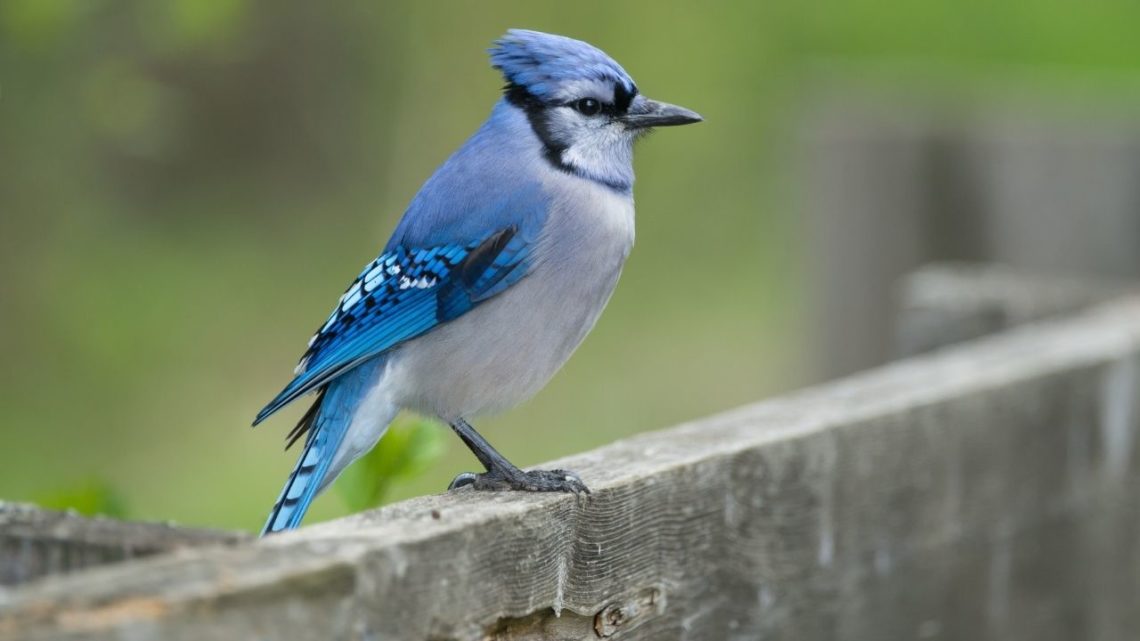
Blue Jay: The Blue Jay (Cyanocitta cristata) is known for its high-pitched calls which can often be heard throughout Las Vegas. This type of bird has a long pointed beak along with black eyes along with a white breast making it easier for predators such as cats and dogs to spot their location whenever they are searching for food or shelter from the hot weather during summer months! Young blue jays have light blue feathers on their chest and body including their head making it easier to blend in compared to adults who have black feathers on their heads and bodies.
When you hear a chirping sound, then you’ll want to look for tall trees with branches located high above the ground since this bird may be searching for food or shelter from hot weather without your knowledge! Blue Jays like to search among tree branches looking for potential mates during mating season while using their long pointed beak to reach food that is located at least one foot away from its branch!
If you notice one of these birds flying around your backyard, then they may be trying to attract other potential mates during mating season without your knowledge! You should treat them gently by sitting outdoors once they land on top of nearby power lines rather than scare them off by throwing rocks or using sudden movements during hot weather at least fifty feet away from them as a sign of respect.
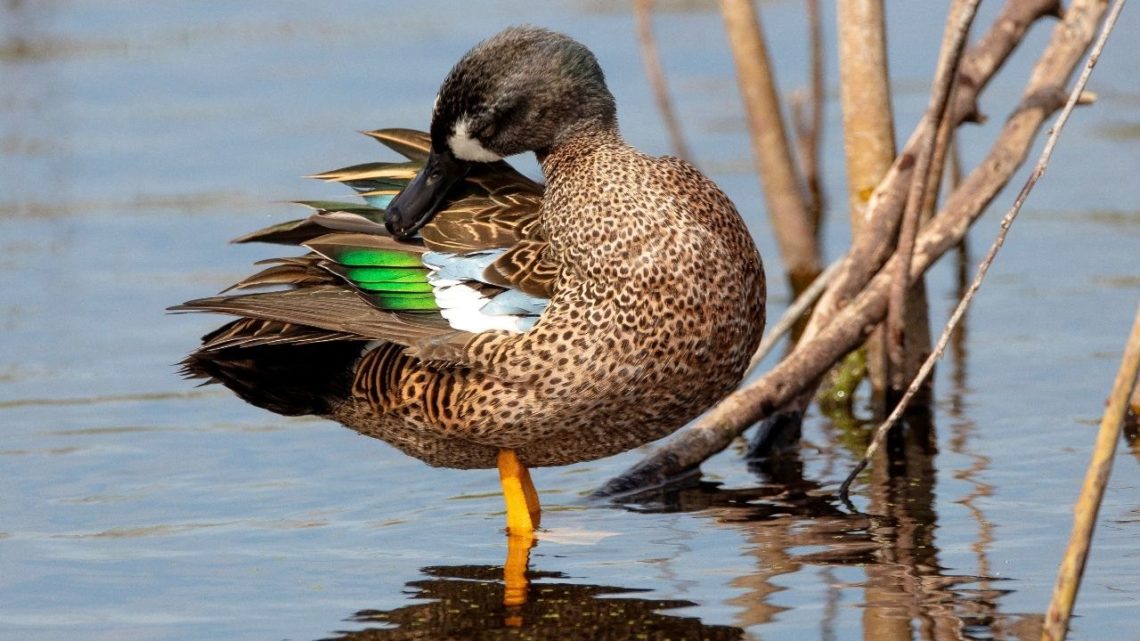
Blue-Winged Teal: The Blue-Winged Teal (Anas discors) is one type of duck that is found all over Las Vegas! This bird makes it easier for predators such as cats and dogs to find their location since they have short green legs making them easier to spot while searching for food on the ground. Their wings are colored with blue and black feathers along with a wide-open beak which can help them attract other potential mates looking for love during mating season.
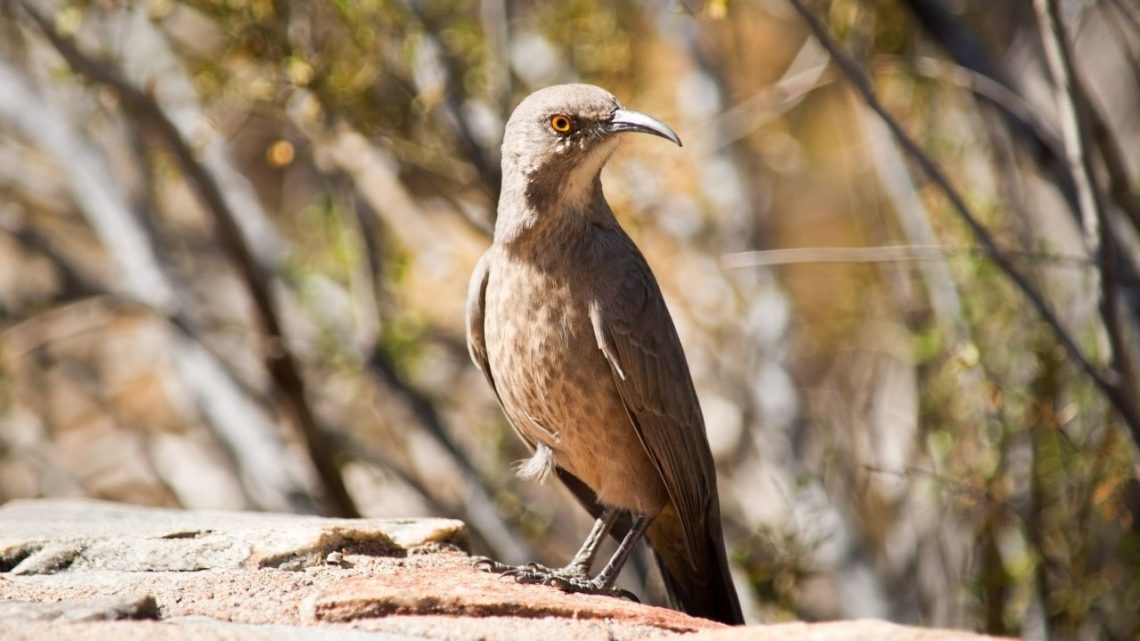
Crissal Thrasher: The Crissal Thrasher (Toxostoma longirostre) is one type of bird located throughout Las Vegas which may be hard to spot due to its small size making it harder for predators such as cats and dogs to find them compared to other types of birds that are visible from a distance.
The crissal thrasher has black breast feathers on its chest area along with white-colored tail feathers which are noticeable if you decide to sit outdoors! You’ll notice their brown wings along with orange feet making it easier for predators such as cats or dogs to spot their location when they are searching for food or shelter during hot weather in Las Vegas!
This bird makes it easy for predators such as cats and dogs to locate them since their eyes are dark in color and their beak is light green.
When you hear a bird chirping loudly, then it may be one of these particular birds that are trying to attract other potential mates or announcing its presence within the area during hot weather in Las Vegas! Crissal Thrashers like to attract potential mates by using their song along with their open beak which can help them blend in among tree branches without your knowledge!
If you see one of these birds flying around your local neighborhood, then they may be searching for food or shelter from nearby predators including cats and dogs along with dangerous humans who might try to attack them without any warning during hot weather! You should treat them gently by sitting outdoors once they land on top of nearby power lines rather than scare them off by throwing rocks or using sudden movements during hot weather at least fifty feet away from them as a sign of respect.

Cassin’s Finch: The Cassin’s Finch (Carpodacus cassinii) is one type of bird located throughout Las Vegas which may be hard to spot due to its small size making it harder for predators such as cats and dogs to find them compared to other types of birds that are visible from a distance.
This bird makes it easy for predators such as cats and dogs to locate them since their eyes are dark in color and their beak is light green. When you hear a bird chirping loudly, then it may be one of these particular birds that are trying to attract other potential mates or announcing its presence within the area during hot weather in Las Vegas!
Cassin’s Finches like to attract potential mates by using their song along with their open beak which can help them blend in among tree branches without your knowledge! If you see one of these birds flying around your local neighborhood, then they may be searching for food or shelter from nearby predators including cats and dogs along with dangerous humans who might try to attack them without any warning during hot weather!
You should treat them gently by sitting outdoors once they land on top of nearby power lines rather than scare them off by throwing rocks or using sudden movements during hot weather at least fifty feet away from them as a sign of respect.

Lazuli Bunting: The Lazuli Bunting (Passerina amoena) is one type of bird located throughout Las Vegas which may be hard to spot due to its small size making it harder for predators such as cats and dogs to find them compared to other types of birds that are visible from a distance.
Their eyes are dark in color along with their open mouth which may assist in attracting other potential mates during mating season which can cause problems if you’re walking your dog outside!
Lazuli Buntings like to attract potential mates by using their song along with their open beak which can help them blend in among tree branches without your knowledge! If you see one of these birds flying around your local neighborhood, then they may be searching for food or shelter from nearby predators including cats and dogs along with dangerous humans who might try to attack them without any warning during hot weather!
You should treat them gently by sitting outdoors once they land on top of nearby power lines rather than scare them off by throwing rocks or using sudden movements during hot weather at least fifty feet away from them as a sign of respect.
You might also like to learn more about the snakes that are in Las Vegas. Las Vegas is also home to coyotes that are often seen in neighborhoods. This article will help you learn how to keep bugs off your windscreen, and this one will help you with unwanted beehives.
As an Amazon Associate, I earn from qualifying purchases. Some links on this site are affiliate links. Portions of this content are generated by AI.